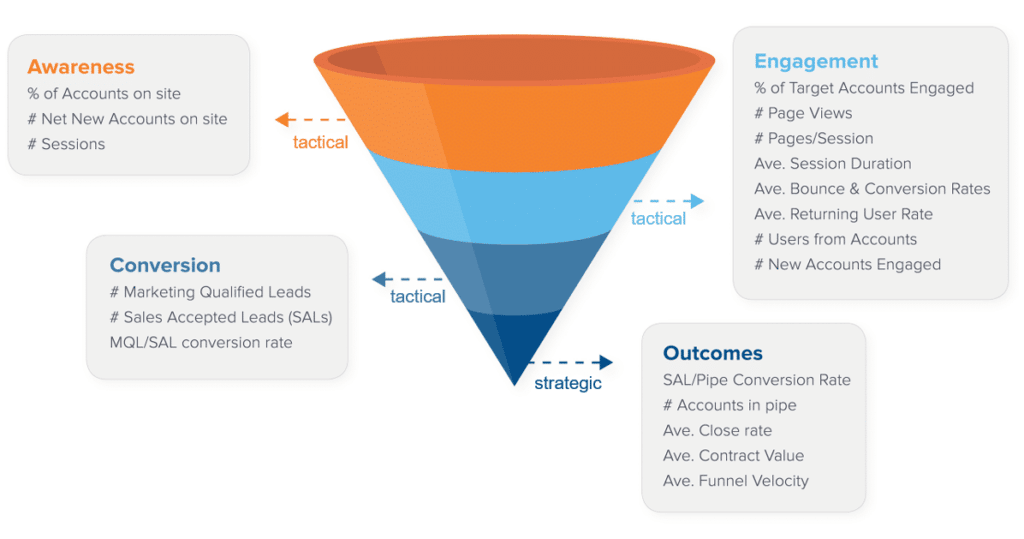Just as there are many companies that are thriving with their marketing initiatives and implementations, there are also many companies that are not seeing any real results with theirs. The difference between those who actually do well and those who don’t really comes down to one big thing: the investment.
The investment isn’t just about your marketing budget, but it’s really about the people you hire to help execute the strategy, the efforts you can and should commit to, and how you work the financials to actually work — meaning, what is your expected ROI?
More specifically, there are CEOs who understand the importance marketing plays in the growth of a company, whereas there are some who just simply don’t, usually because of a lack of education and experience. That said, here’s an analogy I like to use — you can’t walk into a car dealership and expect to drive off in a Tesla if you’re only willing to pay what it’d cost to get a 1983 Honda Accord. That’s unrealistic.
In today’s blog post, I want to focus on how you can maximize the ROI from your marketing efforts including:
- Top reasons why your marketing isn’t working and what to do about it.
- Key marketing strategies that legit work when it comes to generating qualified leads.
- How to build out a solid plan that you can work off of so you get less nervous about the money spent.
Let’s get started…
Why your marketing sucks and what to do
I know I touched on this already, but I truly believe that in some companies, there is this unrealistic expectation for marketing to generate a shit ton of awareness, traffic, and leads, just to serve them all on a platter for sales — and if those leads don’t close, then it’s marketing’s fault.
The problem with this mindset is that it siloes out marketing and creates friction among teams within a company. Instead, reframe the way you look at how marketing will contribute to revenue goals, and then make sure that the investment is there so that you can meet those goals. After all, it is a team effort to rise to the top.
So here are some key tips to fix your marketing efforts, especially if you haven’t seen the results you’ve wanted:
- Develop a clear strategy.
- Know exactly what you are tracking and why.
- Hold teams accountable and empower collaboration and open communication.
- Deeply understand ‘who’ you’re targeting and what triggers them to take action.
- Test as much as possible and do so with a clear growth hacking schedule.
- Set up the right tools, processes, and people.
Once everyone is on the same page, I like using Monday to help organize the team’s efforts. Monday uses a visual interface to help organize projects, assign responsibilities, and keep track of due dates. And with an endless amount of ways to optimize their platform to fit your team’s needs, Monday can help any team stay productive and on top of their tasks. Check out their many templates here.
Marketing strategies that will drive explosive growth
Aligning your efforts to the buyer’s journey will hugely benefit your overall marketing initiatives. There are multiple steps throughout the buyer’s journey, and making sure that you meet potential buyers wherever they are will help you figure out key things like shortening the sales cycle, knowing where a gap is within the journey and how to fix that, and knowing exactly what’s working so you can invest more time there.
Here are my top go-to strategies that will absolutely yield you no less than a 4x ROI:
Set up goals
Marketers who have goals are 376% more likely to achieve success than those who don’t. In short, goals are essential to your marketing strategy road map.

The key is to connect your business goals with your marketing goals. Here are examples of business goals:
- Increase revenue
- Build your brand’s authority
- Reach more prospects
- Grow profits
To tie into these business objectives, here are marketing goals you can add to your road map:
- Gain more email subscribers
- Increase the number of visitors to your website
- Gain more social shares and followers
- Grow the number of click-throughs for your paid ads
Remember, set a time limit for each of these goals. For instance, if your marketing goal is to grow your email subscription to 500, set a date for when you want to achieve it. A goal statement should follow this formula: (goal) plus (number) plus (date). It can look something like this: “Grow my email list to 500 in three months.”
Break down your efforts into small buckets
The secret is to break down each aspect of your marketing plan into smaller categories. Then, track each one to measure your progress. It’s important to treat each of your marketing channels separately. That way, it’ll be easier to track which ones are working and which aren’t. Here’s an example of four channels and how to track their success:
- Your website: Since your website embodies your brand’s online presence, it’s not surprising that it’s one of your major marketing channels. To keep track of its health, you can use the site audit tool at SEMRush for free.
- SEO and content marketing: Having evergreen content is advantageous both for SEO success and to provide readers with value. Monitor Backlinks is a helpful tool to use when tracking how well your content is ranking for keywords. And if you need more keyword ideas, SEMRush has a tool for that as well.
- Social media marketing: 96% of businesses use social media to boost their online presence and gain new leads. If social media is one of your channels, carefully measure your success by paying attention to how users engage with your brand. Do your posts get likes, comments, and shares? Are you gaining new followers?
- Email marketing: This is a powerful form of direct response copywriting. Your percentage of success with leads is much higher, as the people you email have chosen to be part of your email list. So how do you track the success of this marketing channel? The best metrics include click-through rate, conversion rate, and overall ROI. I recommend using a tool like Hubspot or Ontraport to send your emails and track their effectiveness. Follow this link to get a free demo for Ontraport.
Other marketing channels include PPC ads, word-of-mouth marketing, SMS marketing, press releases, print ads, and webinars. No matter which ones you have chosen for your marketing strategy, the key is to measure each one separately.
Segmentation and personalization by lifecycle stages
The sales funnel has three distinctive levels: awareness, consideration, and decision. When dealing with your prospects, it’s a good idea to divide them based on where they are in the buying process.
- Awareness: At this stage, the chances prospects will buy from you are low. Your goal is to make them aware of you by offering them something valuable.
- Consideration: Prospects in the consideration stage recognize the value your product can bring to their lives. At this point, you want to show your expertise in the industry. You aim to show them how your brand stands above your competitors.
- Decision: This final stage is where prospects decide whether they’ll choose your product or someone else’s. It’s important to give them a final nudge and incentive to pick you over your competition.
Not all leads are ready to buy from you. When you get a lead, it’s important to segregate and simplify as well.
- MQLs: These are leads who show buying potential. They have high engagement with a brand, such as multiple offer downloads and page visits. However, they aren’t ready to buy just yet.
- SQLs: SQLs are in the next stage. These leads can be qualified as customers, as they’re ready to buy your product or service.
Nail down KPIs that matter to both marketing and the business
Let me quickly differentiate KPIs that matter most to marketing and the shared KPIs between marketing and the business. But first, it’s important to figure out the following:
- What is the most desired outcome by tracking these KPIs?
- How will these KPIs help the business?
- Which KPIs are going to foster overall growth initiatives?
- How will you define what success really looks like?
For marketing, as an example, looking at open rates, CTRs, CPMs, CPCs, etc. all matter because these metrics allow you to figure out where you may need to optimize your campaigns. As for shared KPIs, the following make the most sense:
- Attribution
- New customers acquired
- Revenue
- LTV
- CPA
- CAC
- ROI

Plan for growth and drive results
When you have a detailed and clearer picture of what you need to do in order to initiate executions that will drive the desired results, then you need to ensure you back that up with the right investment. For starters, figure out the following:
- How many qualified leads do you need to generate to enable sales and push for more opportunities to be closed?
- How much are you willing to pay for a lead? For example, if your average contract value (ACV) is $250,000, then you have a higher ceiling to work with such that you can afford a CPL of $1,000 per lead because the ROI is huge. On the flip side, if your ACV is lower, then adjust the numbers accordingly so they make sense to your business.
- Review your initiatives weekly, monthly, and quarterly. Be flexible with your approach and pivot when you need to.
Moving forward
Over the years and in working with some amazing companies, I’ve realized that what truly takes your marketing efforts to grow from good to great is the team. Behind that are people who are passionate to help each other grow, work collaboratively to hit business goals, and empower a sense of responsibility with accountability.
Lastly, as a geeky marketer at heart, where I have found the most tremendous opportunities unfold is in the ability to truly test the shit out of everything you do. Sure, some executions don’t need data to prove that they will work, but if you center your efforts around data collection and then leverage what you collect to help steer the course, you’re bound for exponential growth and success.
Disclosure: Please note that some of the links above are affiliate links. I only recommend products and services that I use and stand behind, and if you decide to try them, I will earn a commission at no cost to you. Doing so helps me run this blog and provide free content for you, my readers.





